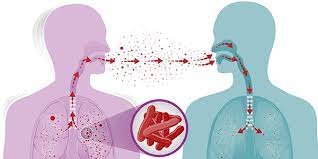“Poverty is the worst form of violence” – Mahatma Gandhi
Issues like hunger, illness, and poor sanitation are all causes and effects of poverty. Not having food means being poor, but being poor also means being unable to afford food or clean water. The effects of poverty are often interrelated and one problem rarely occurs alone. Bad sanitation makes one susceptible to diseases, and hunger, lack of clean water makes one even more vulnerable. Impoverished communities often suffer from discrimination and end up caught in a cycle of poverty (Shelton, 2016).
While the world is stocked up with a number of challenges to tussle, poverty still remains one of the biggest concerns. For almost 25 years, extreme poverty was steadily declining. However, the quest to end poverty has suffered its worst setback and global extreme poverty is expected to rise in 2020 for the first time in over 20 years. The disruption of the COVID-19 pandemic compounds the forces of conflict and climate change, which were already slowing poverty reduction progress (The World Bank, 2020). A recent documentary showed how individuals, who are homeless in the United States of America, have turned their cars into their full-time place of stay and parked in a certain parking lot for years. These individuals have reached such circumstances, due to health issues, loss of jobs and other unavoidable reasons.
Poverty is in plenty and can be seen in almost each and every country, some at an immensely high rate and some at a manageable stage. Back home in India, according to the 2011 Census, the percentage of persons below the poverty line in 2011 – 2012 has been estimated as 25.7 per cent in rural areas, 13.7 per cent in urban areas and 21.9 per cent for the country as a whole. According to the World Data Lab which monitors global poverty using advanced statistical models shows that less than 50 million Indians may be living on less than $1.90 a day. India’s last household survey of 2017 – 2018 captures household consumption more comprehensively includes an adjustment for owner-occupied housing and measures other items in accordance with common international practices (Gupta, 2019). These figures will now change drastically with the damage done by the pandemic on people from all walks of life and many unforeseen losses that will evolve over a period of time.
Women are more likely to be poor than men because they have less paid work, education, and own less property. The UN Secretary-General, Antonio Guterres is of the opinion that women are the worst sufferers as they are the ones who are most likely to lose their jobs due to COVID-19 (Times Now, 2020). Anticipation in the rise of dropouts is likely to happen this year and in the subsequent years, with poverty being its root cause. When we have a look at the list of Indian states and union territories, based on the percentage of people below the poverty line and based on Mixed Reference Period (MRP) consumption, Goa has the lowest poverty rate, while Chatti1sgarh rates at the highest. Meghalaya stands at 11.87 per cent for the population living below the National Poverty Line (SDG India Index, 2019).
The reasons for poverty are common in certain aspects across the world. These reasons seem to be interlinked and form a web-like structure whereby one factor leads to another and the other leads to another one. One of the key factors responsible for ever-rising poverty is population growth. A big number of family members may result in children being deprived in quality education, and because one has not had a good foundation, s/he may not receive proper knowledge and training which may result in unemployment, early marriage, hence poverty. This vicious cycle of poverty means lifelong barriers and troubles.
The burden of poverty is shouldered upon to the children and grandchildren and it is carried over for generations together. Constant climate change, capital deficiency, an under-developed economy, improper use of natural resources, lack of infrastructure, lack of skilled labour, rural economy, net national income and deficiency of efficient entrepreneurs are some of the important components that result in poverty in any economy. This is perhaps why poverty is at number one in the Sustainable Development Goals (SDG) 2030. The seventeen SDGs are integrated i.e., they recognise that action in one area will affect outcomes in others and that development must balance social, economic and environmental sustainability.
The United Nations General Assembly (UNGA) through its resolution adopted on December 22, 1992, declared October 17 as the International Day for the Eradication of Poverty and this year’s theme is “Acting together to achieve social and environmental justice for all”. The theme is highly significant amid the Covid-19 pandemic. On this occasion, The World Bank is trying its level best to highlight the urgency of fighting global poverty, particularly in light of the setbacks caused by the pandemic.
The 2020 edition of the biennial flagship Poverty and Shared Prosperity report provides sobering new numbers about how far we are from achieving the goal of ending poverty. This year, for the first time in over two decades, the extreme poverty rate will rise, reversing a trend that has lifted hundreds of millions out of poverty. In The World Bank Annual Meet 2020, the suggestions from experts in the field from all around the globe in relation to eradication of poverty have suggested the immediate need to help individuals get access to health care, education, improvement of infrastructure, social protection programmes, preservation of livelihoods, focus on long term challenges of the pandemic, to provide finances with proper liquidity, human capital and restructuring of the corporates to name a few.
When it comes to urban poverty, the damage in the livelihoods of the people which has come all of a sudden will result in direct impact on the physical, emotional and psychological well being of the people. This can be more hazardous than can be imagined. India’s unemployment rate has skyrocketed to a staggering 27.1 per cent since the beginning of the lockdown, especially in metropolitan cities. The scenario is still continuing. Employment in Micro, Small & Medium Enterprises (MSMEs) and unorganised sectors are said to be the worst hit. This has left hundreds of thousands of migrant workers stranded across the country (India Today, 2020). Those affected sectors are food service, travel, retail, door to door sales, fitness and real estate.
Likewise, rural poverty is not very far away in this situation. According to the Food and Agriculture Organisation of the United Nations, agriculture, with its allied sectors, is the largest source of livelihoods in India. 70 per cent of its rural households still depend primarily on agriculture for their livelihood, with 82 per cent of farmers being small and marginal. The agriculture sector contributes around 16 per cent of the country’s Gross Domestic Product (GDP). Also, India is one of the world’s largest producers of crops like rice, wheat, sugarcane, cotton, vegetables and milk. This means to suggest that the country’s struggling rural economy that supports nearly half its population is in great distress (Kumari, 2020).
While for decades, there are a lot of families who are caught in the obstacle to make ends meet, the pandemic has made it even more worst. One of the most painful cites is to see aged men and women sitting in the roadside and market places selling products in an effort to earn a living or the dreadful situations of kids begging/involving in some activity to earn money. This pandemic will revolutionise many things – some notable, while some which will evolve on its own. This experience of a kind has brought the world closer together.
Humanity has changed for the better and we have witnessed patience, tolerance, and care amongst human beings, things that were not seen earlier. Although the government and concerned bodies are doing its level best to ‘eradicate’ poverty at all levels, the time has come for active participation and contribution on the part of the society to address poverty and all those individuals entangled in it. A collective effort to lessen poverty if not eradicate can be the first step to that goal. In the words of Nelson Mandela: “Overcoming poverty is not a gesture of charity. It is the protection of a fundamental human right, the right to dignity and a decent life”. (The writer can be reached at maxwell.lyngdoh@gmail.com)


























